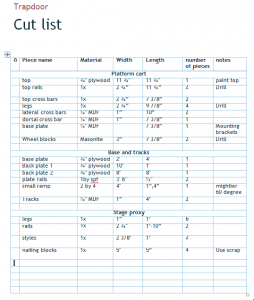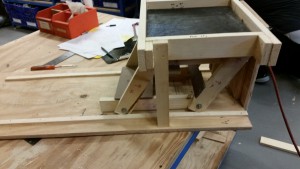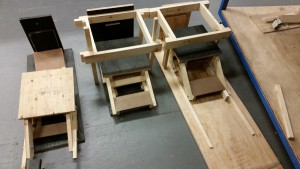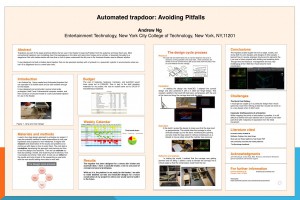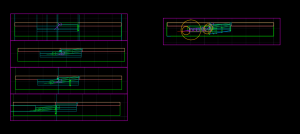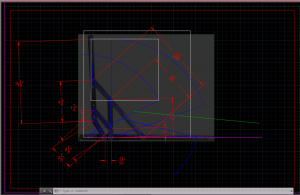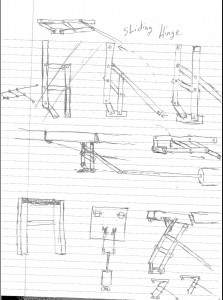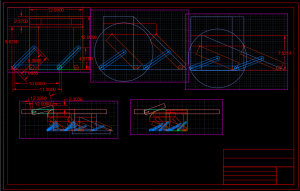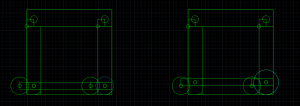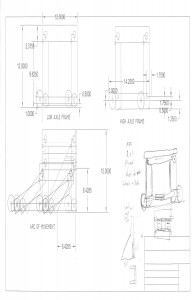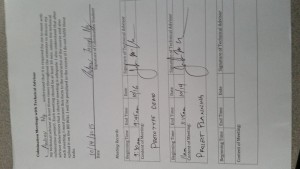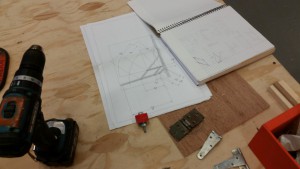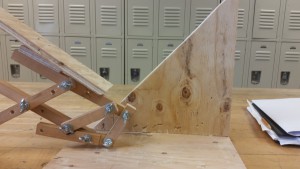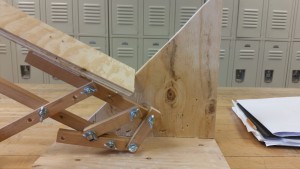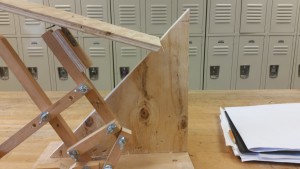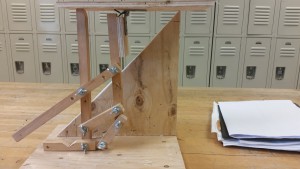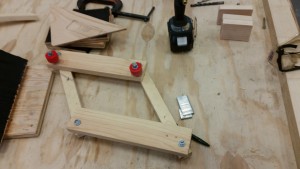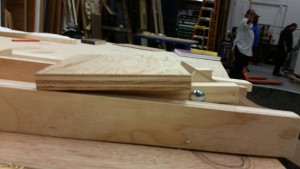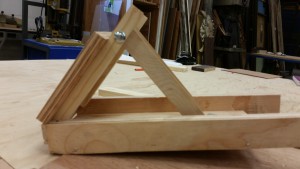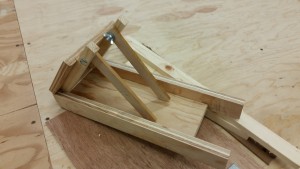Automated trapdoor: Avoiding Pitfalls
Introduction
I am Andrew Ng, I am an entertainment technology student specializing in technical directions and lighting design. I have created and Automated trapdoor that can operated in a shallow deck and be safe resilient enough for the theater.
Materials and Methods
The trapdoor will be designed for a stress skin trisket and stud-wall deck. I will have a autoCAD model, a one to one proof of concept and several prototypes.
A four step design approach is used to test a hypothesis or design to progress the project to new milestones. It cycles begins with researching, then incubating and developing the approach or hypothesis, executing or building a model to test the hypothesis, they reflecting on the results and returning back to the research step to start the process over again with a new idea.
Results
The project gradually evolved from a theoretical sketches and a brainstorm of unrefined ideas into a computer drafted assembly and physical model that incorporates several existing ideas and patents to solve an novel problem with spacial constraints.
Conclusions
The trapdoor project taught me how to adapt, modify, and revise both my own designs and designs of other people. I learned how to reverse engineer structures into elements the I can use in future projects with drafting and modeling tools.
Literature Cited
US Patent Office R736001R
McMaster Catalog 4 bar steel hinge
Stud wall and Trisket platforms Yale theater PDF
Acknowledgements
John McCullough, Rudy, Remmy, Cortly Dennis, and Angelo
For Further Information
Contact Andrew Ng at Andrewj.ng@outlook.com
Leave a message at # (518)-712-9466
Visit the project website at https://openlab.citytech.cuny.edu/andrewng-eportfolio/
PDF available here:
Poster Sections.pdf

